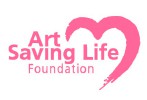Many of us like to graffiti when we are very young. The passion for graffiti lies in the fact that you only need a piece of paper and a pen to create a world that you imagine yourself. Although this small world only exists on a piece of paper after painting, it fully satisfies people’s desire to create a space of their own. But when we are adults, very few people pick up the brush again to paint a painting. Even if he occasionally paints, he will feel that his level of painting has not improved significantly. When we talk about painting, we mean to create a painting like an artist, rather than copying a painting that someone else has already painted. If we take this as a standard, it seems that only those who love art are really better than ourselves. There was no significant improvement as a child. It is said that when we become adults, we have better observation ability and logic, and our knowledge reserve and understanding ability in all aspects are far more than when we were six or seven years old, but there is no qualitative progress in painting. , what causes this?
I think everyone can draw a picture that becomes a work of art, and if they don’t, it’s just because they haven’t mastered the artist’s way of thinking.
When we were young, we liked graffiti, which is a desire of our inner instinct to express ourselves through drawing.
We all know that the brain is divided into left and right brains. There is a physiological psychologist in the United States, Roger Sperry, whose research has confirmed that the human left and right brains are divided into different parts of the human brain and are responsible for completely different content. With this research result, Roger Sperry won the 1981 Nobel Prize in Medicine or Physiology. In his dissertation, he states that the human left brain is mainly responsible for all rational content, such as logic, reasoning, and language; while the human right brain is mainly responsible for the perception and resonance of the outside world, such as intuition and observation. , imagination these. Because the left brain is responsible for rationality, it is said that the left brain occupies a relatively dominant position in our decision-making. In our life, the left brain will make a detailed and representative data sample of the unfamiliar things we come into contact with for the first time and store it in the database. At this time, in order to collect information as comprehensively as possible, the left brain will subconsciously In this way, we can increase our interest in this thing, so that we will observe carefully, and at this time our right hemisphere begins to perceive and observe, collecting data samples for the left hemisphere, but the left hemisphere is no longer familiar with the established samples. interested in. The left brain subconsciously makes us no longer curious about familiar things, because it thinks that we don’t need to waste time to look carefully. This is why we are always curious and interested in new things, and always turn a blind eye to common things, which is why children are particularly curious.
Starting from this Thursday (November 3rd, 2022), we will provide two offline art creation courses for adults over 50 years old in the community. This is an opportunity to bring us back to our innocent childhood through painting. Interested friends You can contact us to register for the event. Check out the poster for details!


Art is for health, and it is rooted in the idea that creative expression can support self-discovery at a deeper level of awareness. Art, both the creative process and the process of viewing the artwork of others, is used to help us explore our emotions, develop self-awareness, cope with stress and see things from a different perspective, and even improve our self-esteem. The advantages are many, but you need to be open enough to allow yourself to explore it.
Art Wellness workshops are mainly to help us experience the unique art and to calm our inner self-criticism and self-judgment. We then have a conversation about art through discussion to reveal its meaning.
